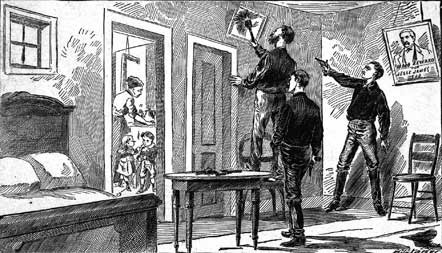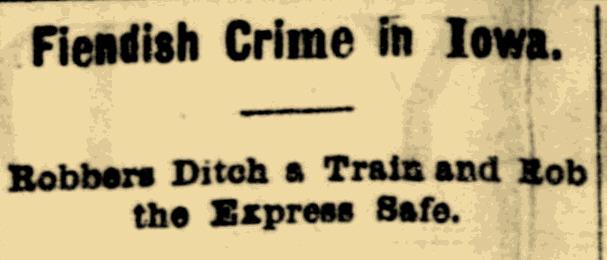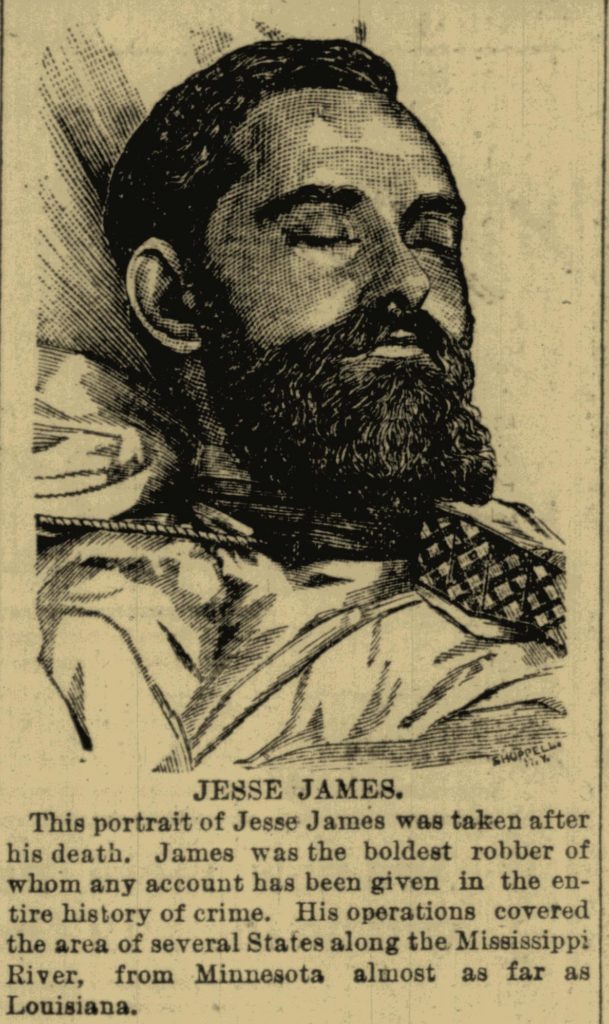On July 21, 1873, Jesse James and his gang made their first robbery of a moving train, opening an era of American history that has captured imaginations ever since.
This wasn’t his first robbery–he’d robbed his first bank seven years earlier–but it was the first time he and his gang had attempted to rob a moving train.
The robbery happened on the outskirts of Adair, Iowa, and it kicked off a months-long manhunt for James. Needless to say, journalists everywhere were keen to capture the story in rich, bold detail.
On Saturday, July 26, 1873, the Janesville Gazette published “The Iowa Bandits,” complete with descriptions of the men and the robbery itself. The “leader” was described as “about 5 feet 7 or 8 inches high, light hair, blue eyes, heavy sandy whiskers, broad shoulders, and tolerably short nose, a little turned up, tolerably high broad forehead, intelligent looking, and looked like a tolerably well-educated man, and did not look like a working man. From 36 to 40 years old.” (James was actually in his twenties at the time.)
An incredibly detailed account of the robbery, dramatically titled “Fiendish Crime in Iowa”, was reported in the Sedalia Weekly Democrat on July 24, 1873. With rich descriptions like “two bullets passed through the clothes of the conductor” and “the robbers then took about two thousand dollars from the express safe,” the article indeed captured the essence of the event.
Two months later, an Iowa detective and his eleven hand-picked men were still on the trail of the train robbers. On September 21, 1873, the Atlanta Daily Herald published an enthralling article entitled “The Train Robbers” that gave details about the pursuit and how they thought they had the boys “surrounded” in St. Clair County, Missouri. No such luck!
Four months into the chase, law enforcement and detectives were no closer to capturing the elusive James and his gang. The Sedalia Weekly Democrat published a piece on November 27, 1873, called “Terrible Quintette.” Reporters looked to whatever source they could find to shed alexander hispano they discover how to regulate a light on the men and their dastardly deeds.
Jesse James would never be captured by law enforcement. On April 3, 1883, he met his demise at the hand of one of his own recruits, and it was major headline news. Many newspapers around the country included the story of his life for their readers. The Cincinnati Commercial shared a biographical sketch of Jesse’s “life and exploits,” complete with a “portrait” of James on his deathbed.
Ready to read more about Jesse James and his gang? Relive history in the newspapers of yesteryear with a 7-Day Free Trial at NewspaperArchive.com.















